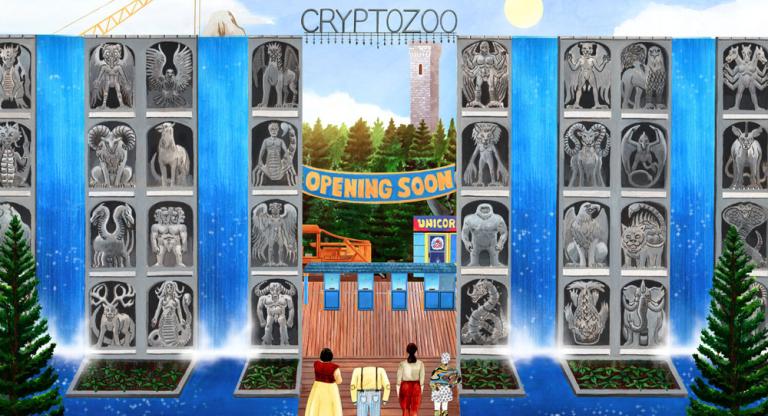In the late 1980s, Disney was not yet the all-consuming cultural juggernaut it was soon to become. The studio had produced relatively few memorable animated films throughout the decade, instead focusing on live-action movies like TRON (1982) and Dragonslayer (1981). The box-office failure of The Black Cauldron in 1985 was so devastating that it put the future of the company's animation department in doubt. But other studios were busy putting out their own animated children's films, and one such movie harkened back to Disney's work in the golden age of American animation while also anticipating a major pop-culture fixation of the 1990s: dinosaurs.
Directed and produced by Don Bluth—who had left Disney in the late ’70s—with Steven Spielberg executive producing, The Land Before Time (1988) is an animated film in which a band of young dinosaurs, separated from their families, make a journey to the Great Valley. On the way, they overcome their ingrained prejudices to stick to their own kind, and a few have little personal arcs. Cera, the proud "three-horn," learns to accept help. Petrie, the awkward "flier," learns to, well, fly.
Since this is a children's movie from the 1980s, it opens with the death of a parent: the main character, Littlefoot, sees his mother die after a "sharptooth" (T-rex) attack. (Bluth and Spielberg's premise for the film was "Bambi, but with dinosaurs.") That scene, as well as a subsequent chase, notoriously terrified children. Those sequences are interspersed with silly ones where the humor comes primarily from characters having goofy voices or using odd turns of phrase ("green food" for leaves, "earthshake" for earthquake), which may be amusing to kids but grating to adults. This tonal variation led Peter Travers to wonder who the movie's intended audience was, noting the disconnect between the "violence that might be hard on the younger ones" on the one hand and a "preachiness that’s hell on adults" on the other.
Part of the film's unevenness stems from the fact that it was heavily cut down only weeks before release. Over ten minutes of fully-animated footage from nearly twenty different scenes were removed to get The Land Before Time a G rating. An uncut version of the film does not seem to exist, though perhaps because of the movie's frightening impact on children at the time, the excised scenes have become something of a fixation for now-adult hunters of lost media online.
That's not to discount the film's production. The dinosaur characters look fine and animate convincingly, but the real star here, visually speaking, is the background art. Full of misty valleys, bubbling swamps, and blistering badlands, the film's backgrounds are gorgeously evocative. Background artists Sunny Apinchapong, Mannix Bennett, Barry Atkinson, Carl Jones, David McCamley, and Don Moore also worked on animated films like The Secret of NIMH (1982), The Thief and the Cobbler (1993), The Emperor's New Groove (2000), and The Lion King (1994), and their work here is on par with those projects.
Perhaps the strangest thing about The Land Before Time is its religious subtext. Littlefoot is a messianic figure, born under odd circumstances and tasked with leading a disparate bunch through a dangerous world to a promised land of abundance. Bluth is a Mormon and has spoken about the influence of the church on his work. Beyond the generic Christian interpretation of the film, Littlefoot can also be seen as a specifically Mormon figure. Like Joseph Smith, he witnesses a pillar of light. Like Brigham Young, he leads his followers west to the valley of their destiny.
This imagery was toned down in sequels, and there were plenty of them. The Land Before Time spawned thirteen direct-to-video movies, a TV series, and over a dozen video games. Neither Bluth nor Spielberg was involved in any of these, and none of them approaches the technical quality of the original, instead opting for musical numbers to draw in children.
Bluth's work after The Land Before Time mostly failed to match its success, partly as a result of the Disney renaissance beginning with The Little Mermaid in 1989. The notable exception is 1997's Anastasia, co-directed by Bluth, an alternate history imagining the youngest daughter of the Romanov dynasty alive and amnesiac in Paris. (Despite popular confusion, “Anya” is not considered a Disney princess, even after the company’s 2017 acquisition of 20th Century Fox.) Spielberg, on the other hand, famously returned to the prehistoric well, cementing the ’90s as the decade of the dinosaur and creating a second dinosaur-based franchise that has continued long past his having any meaningful involvement with it.
Dinosaurs have been the subject of public interest since the first fossils were first dug up and exhibited in the mid-1800s, but the ’90s saw a renewed popular interest in them after young-gun paleontologists like Robert Bakker and Jack Horner shook up scientific perception of the creatures. Discoveries in the ’70s and ’80s suggested that dinosaurs were not the cold-blooded, lumbering beasts that prior research had believed them to be, but instead warm-blooded, active creatures who were more avian than reptilian. Horner, who was a partial inspiration for the Alan Grant character in Jurassic Park, carried out research that even suggested that some dinosaurs cared for their young. The science is still out on whether they, like Littletooth's mother, could guide their children from beyond the grave in the form of clouds.
The Land Before Time screens this morning and tomorrow, June 25 and 26, at Nitehawk Cinema Prospect Park.




